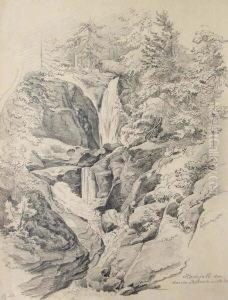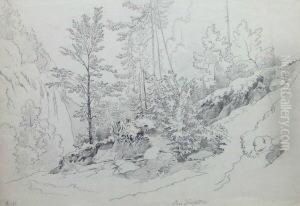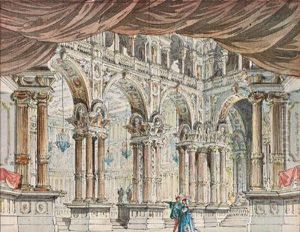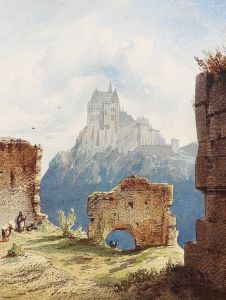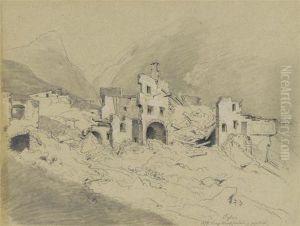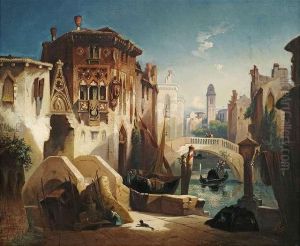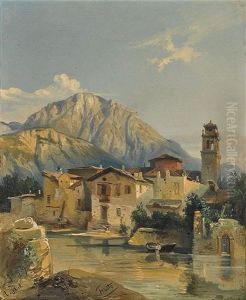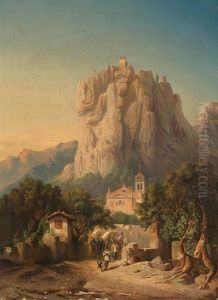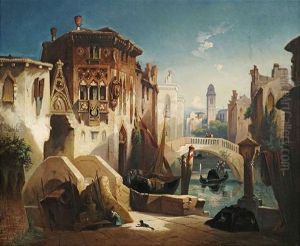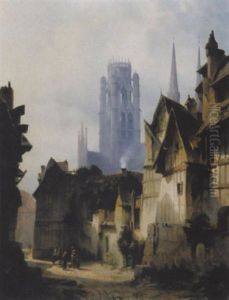Christian Jank Paintings
Christian Jank was a German illustrator and scenic painter born on July 15, 1833, in Munich, Germany. He is best known for his contributions to the designs of the fairytale-like castles commissioned by King Ludwig II of Bavaria, most notably Neuschwanstein Castle, which has become an iconic symbol of the region and a major tourist attraction.
His artistic journey began with his studies at the Academy of Fine Arts Munich, where he was influenced by the Romantic movement prevalent at the time. Jank initially worked on a number of theatrical productions, providing designs for sets and costumes that showcased his imaginative and fanciful style.
In the 1860s, Christian Jank caught the attention of King Ludwig II, who was known for his passion for the arts and his desire to create extraordinary and fantastical architecture. Jank became an integral part of the king's ambitious architectural projects. He was tasked with creating the initial conceptual paintings and design ideas for several of the king's castles, which were inspired by medieval legends and the operas of Richard Wagner, whom both Jank and Ludwig admired.
Neuschwanstein Castle, commissioned in 1869, is perhaps Jank's most famous work, where he provided the initial conceptual ideas. Although he was not an architect, his romantic and theatrical vision influenced the castle's design, which was later realized by architects Eduard Riedel and Georg von Dollmann. Jank's influence extended to other Ludwig II projects such as Linderhof Palace and Herrenchiemsee, although to a lesser extent than Neuschwanstein.
Christian Jank's career was closely tied to the patronage of King Ludwig II, and after the king's death under mysterious circumstances in 1886, Jank's career declined. He lived the last years of his life in relative obscurity and financial difficulty. Christian Jank passed away on November 25, 1888, in Munich. After his death, his work gained recognition for its role in the creation of some of Germany's most beloved historical landmarks. Today, his artistic legacy is inseparable from the romantic image of Bavaria and the fairy tale aesthetic associated with King Ludwig's castles.
